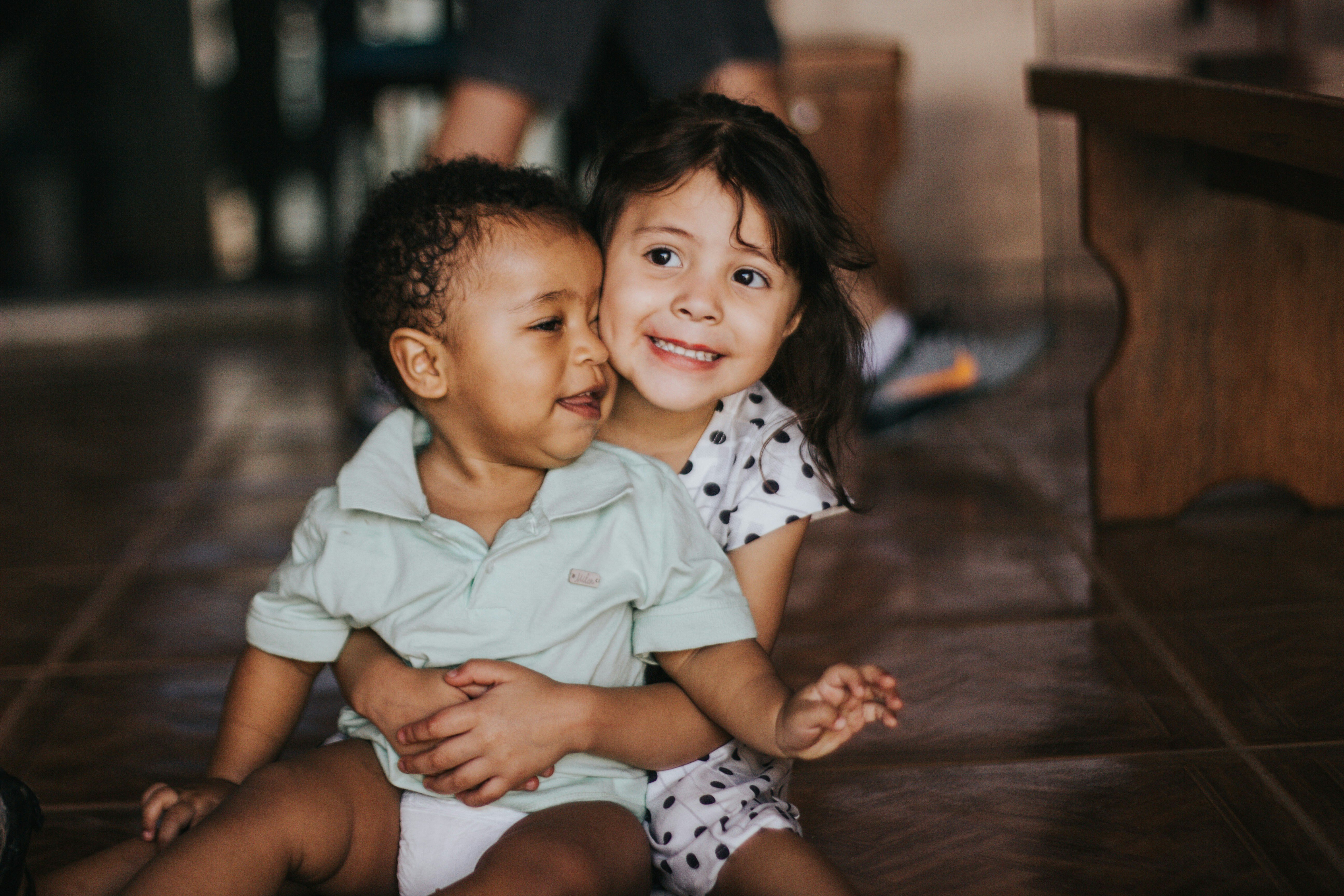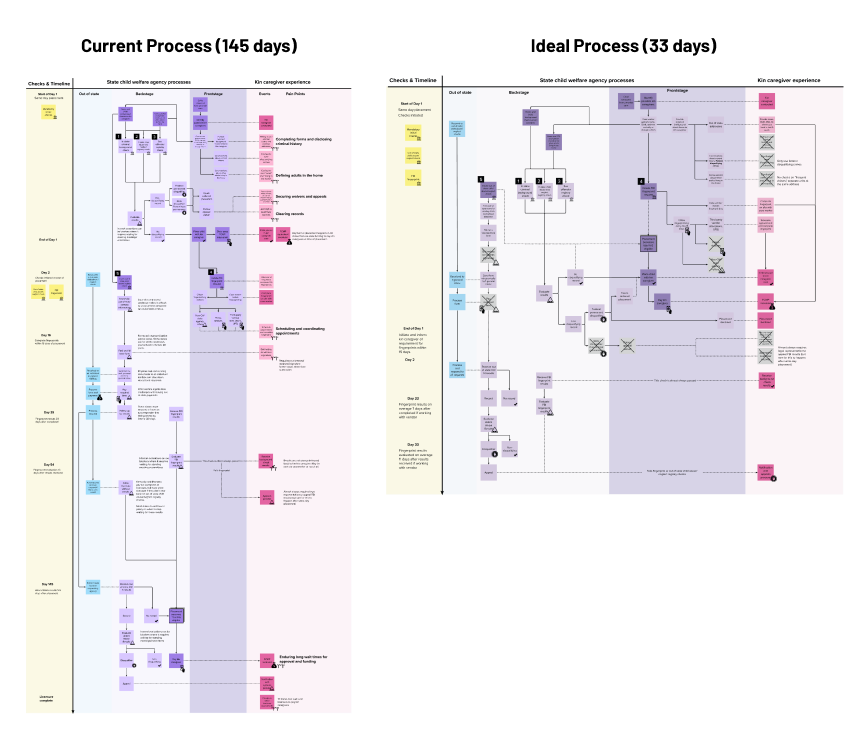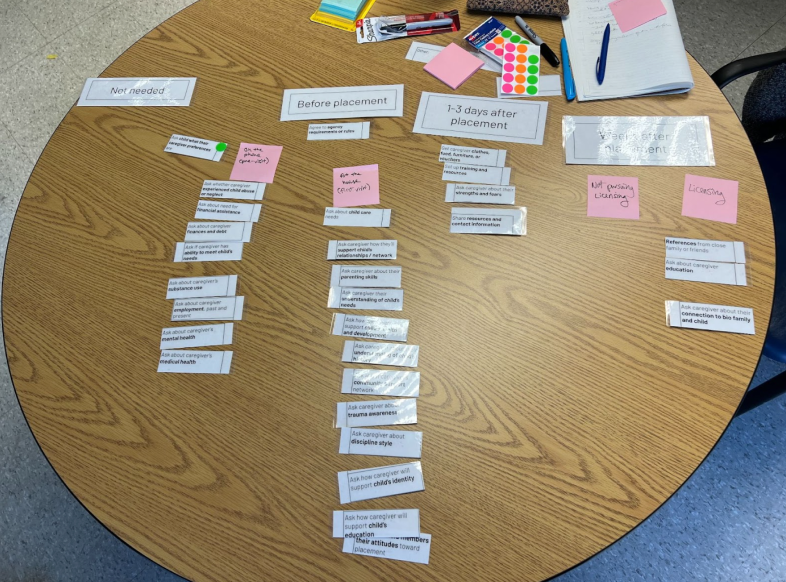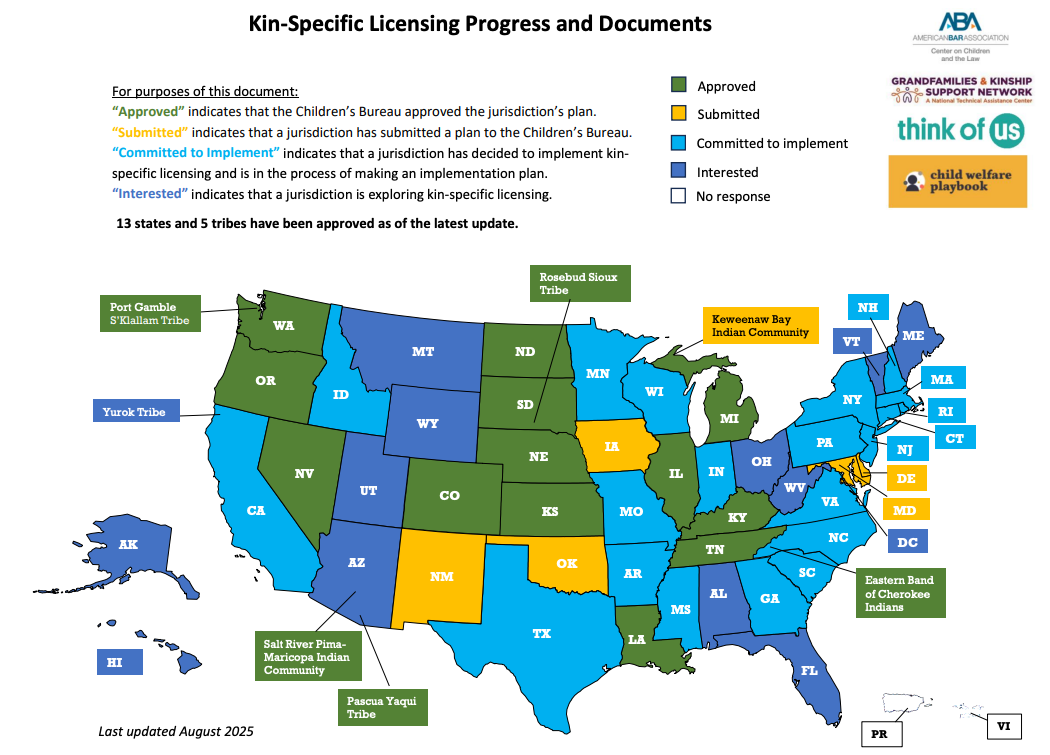
Case study
Creating national standards to approve kin caregivers
Co-designing foster home licensing standards to keep children with kin
The challenge
When children need to be removed from their parents, they have better outcomes when they’re placed with relatives or adults they already know (known as “kin”), compared to foster care in a stranger’s home. But historical inequities and barriers in the licensing process make it difficult for children to get placed, and remain, with kin.
Child welfare agencies have disproportionately separated Black, Indigenous, and lower income families. Kin, often grandparents on fixed incomes, have faced long-held systemic bias from caseworkers about their ability to provide safe care to children. In 2023, 38% of children in foster care in the U.S. were in kin caregiver homes, nearly half of which were unlicensed. That means the caregivers were receiving no financial support to meet the children’s needs.
Licensing is critical because it enables caregivers to get the money and resources they need to provide stability and safety for children. Existing licensing standards were designed for foster parents who had no prior relationship with the children entering their care and required months of preparation and training before licensure.
In September 2023, a U.S. federal rule change allowed jurisdictions receiving federal funding to create dedicated standards for licensing kin. This created the opportunity to support caseworkers to look at kin caregiver strengths instead of deficits. Our client Marina Nitze, who leads the Child Welfare Playbook Working Group, tapped Bloom Works to research and develop a set of template forms that child welfare agencies across the country could use to adopt the standards and license kin more quickly.
The templates, along with many of our findings, were validated by leading national child welfare organizations and published as the Recommended Standards of National Organizations for Kin-specific Foster Home Approval.
The project
Our goal was to create an equitable assessment process that keeps children with kin, prepares caregiver homes, manages risk, and ensures children’s safety and well-being. Our guidance needed to serve different political, legal, and cultural contexts.
We gathered input from 430+ participants and 50+ child welfare agencies (state, tribal, and territorial) to create and test template forms for agencies to assess kin. We spoke with child welfare staff and managers, kin caregivers, former foster youth, and subject matter experts across a wide variety of disciplines. To make sure the final forms worked across diverse contexts, we continually recruited marginalized groups and used co-design methods. Among kin, we sought out caregivers who were Black, Indigenous, people of color, from diverse cultures and faiths, or lived on low or fixed incomes. We also interviewed subject matter experts (SMEs) in child abuse, fire and rescue, child psychology and development, tribal affairs, legal, gun safety, pediatrics, and organizations representing the aging population, the LGBTQ2SIA+ population, and the cultural parenting needs of diverse faiths and ethnicities.
We divided our research into 3 topics:
- Background checks
- Physical home safety
- Kin caregiver assessments
Each phase had a discovery and testing phase. We designed feedback and co-creation sessions to be human-centered and trauma-informed by asking for input instead of personal history and offering participants a sense of control.
After each phase, we published draft forms in an open access format for child welfare agencies to start using them.
We've had a huge cost savings for the state, which is a great way of helping promote why this is such a great idea. We've saved over $400,000 for annual leave because we don’t have to pay a contractor to do the formal home studies.
—Lindsay Coleman, Tennessee DCS
Background checks
After getting input from 200+ participants representing nearly every U.S. state, we mapped the typical process that agencies follow to conduct background checks. We wrote a summary of pain points and promising practices from 45 jurisdictions. And we used that to create an ideal process map to highlight opportunities to make this process quicker, while maintaining safety standards.
Our client used our findings to write a public comment advocating for a streamlined, equitable process for the federal rule on kin-specific approvals.

Current and ideal process map for conducting background checks (PDF version)
The alternative relies on more work upfront but ultimately cuts out time for both agencies and families. It has the potential to be complete in about 1 month compared to 5 months.
We also reviewed 40 states’ existing forms used to conduct background checks. In our prototype forms, we eliminated extraneous fields, like previous addresses, and we refined them in tests with 51 kin caregivers and child welfare staff.
We made our tested forms publicly available in the Kin-specific Foster Home Approval Standards so that any agency could use them. This included forms for caregivers to confirm consent, provide criminal history, and prove their identity. And it included forms for agencies to check out-of-state child abuse and neglect history. For each form, we created a version with explanatory notes on why changes were made to help agencies train their staff.
Physical home safety
In our discovery phase on physical home safety, we quickly learned that participants valued emotional safety over physical safety of the home. But state agencies often put more emphasis on the physical home and readily failed kin for non-safety, subjective infractions, like having a “dirty” home. We identified unnecessary requirements or questions that could invite bias that prevented kin from being approved, like not allowing bunk beds, minimum bedroom size, and water temperature checks. Meanwhile, kin were rarely asked about material goods they needed, and agencies weren’t consistent or clear about the help they could provide.
From this work, we developed a physical home safety checklist to focus on necessary requirements and identify caregivers’ material needs. We provided a list of questions we recommended against asking because they were invasive or unnecessary. And we created a question bank for states to select questions relevant to their communities. Our form—which we tested with 83 child welfare staff and kin caregivers—emphasized a collaborative problem-solving approach to build trust with families. It asked kin what they needed and listed ways the agency could support them, such as car seat installation, first aid supplies, and referrals for food assistance. We explained that it was critical to share the questions with families in advance so they could prepare and work together to create a safe home for children. Overall, this form is helping to shift agencies from being punitive first, toward collaborative and supportive first.
Kin caregiver assessment
Our final phase of work looked at how to assess caregivers’ ability to care for children by asking about their relationships, health, financial history, and ability to meet children’s needs. We reviewed 31 agency forms and spoke with 86 people, including child welfare staff, kin caregivers, and former foster youth. We also observed 4 assessments conducted by caseworkers in caregivers’ homes. After these in-person observations, we did a card sorting activity with caseworkers to understand how they prioritized what to ask caregivers and repeated the activity with a group of caregivers.

We originally envisioned 2 separate forms: one that assessed the caregiver's ability to care for children, and another about physical home safety and material needs. After learning that caseworkers assess all of these aspects together, we changed our approach to recommend a single form to remove redundancy and excess from the process. The form emphasized how to support, rather than deny kin, by identifying their needs, and how to exercise flexibility in the requirements based on the children’s age, history, and abilities. We tested the form with 55 child welfare agency staff, kin caregivers, and SMEs.
To expedite agencies’ ability to implement the form, we developed a staff training guide with guidance on how to use it, why each question was included, and a list of questions we removed from the assessment with our rationale. We also created a plain text question bank so agencies could pull questions into their own form templates.
The form is no longer a pass/fail assessment. The new assessment provides kinship caregivers with the dignity and respect they deserve and focuses on helping the family make any changes that are needed for them to safely care for the children.
—Becky Rice, Maryland Department of Human Services
The result
Our work has saved money, time, and stress for both families and agencies. It’s encouraged a shift toward a culture of transparency, collaboration, and support between kin and agencies across the country. And most importantly, it has helped keep children with kin.
“The entire country is committed to adopting the standards and using the forms in whole or in most part,” said our client, Marina Nitze, from the Child Welfare Playbook Working Group. Since the kin model standards were rolled out, every state and at least 5 tribes have expressed interest in adopting or have already adopted the standards. We know of at least 8 agencies using the forms, gathering feedback, and working iteratively to make changes while implementing. This is a big shift away from how we’ve typically seen child welfare agencies make changes, all at once and without space for future adjustments.

Kin licensing progress map (PDF version)
As of August 2025, 13 states and 5 tribes have approved and started implementing the new kin-specific licensing standards.
The kin assessment form and model standards are reducing administrative burdens and costs for agencies. For example, Maryland went from 30 forms to 3—a 90% decrease. Tennessee shared that they reduced the number of forms they use from 17 to 6—saving time for caseworkers and families, while saving on costs.
This is impacting families as well. Kin are now able to be licensed within days, which was previously impossible. Baltimore City began piloting Maryland’s version of the assessment in 2024 before rolling it out statewide a few months later. Their team shared that removing processes like having the fire and health department visit homes, means that families no longer have to take 2 additional days off work to complete the assessment. They have been able to approach families who weren’t previously licensed and offer them to get licensed and receive financial support, which “families were elated by,” their program manager said.
The annotations, instructions, and training guides have been critical to the success of this work. They have helped persuade reluctant staff that the new standards would protect children and better assist families. Oregon remarked that the annotations about why questions were removed were exceptionally useful in coaching staff, and Washington included all our annotations in their staff training guide.
This work is part of a broader portfolio of work in the child welfare space. Find more of our work with children and families here.
